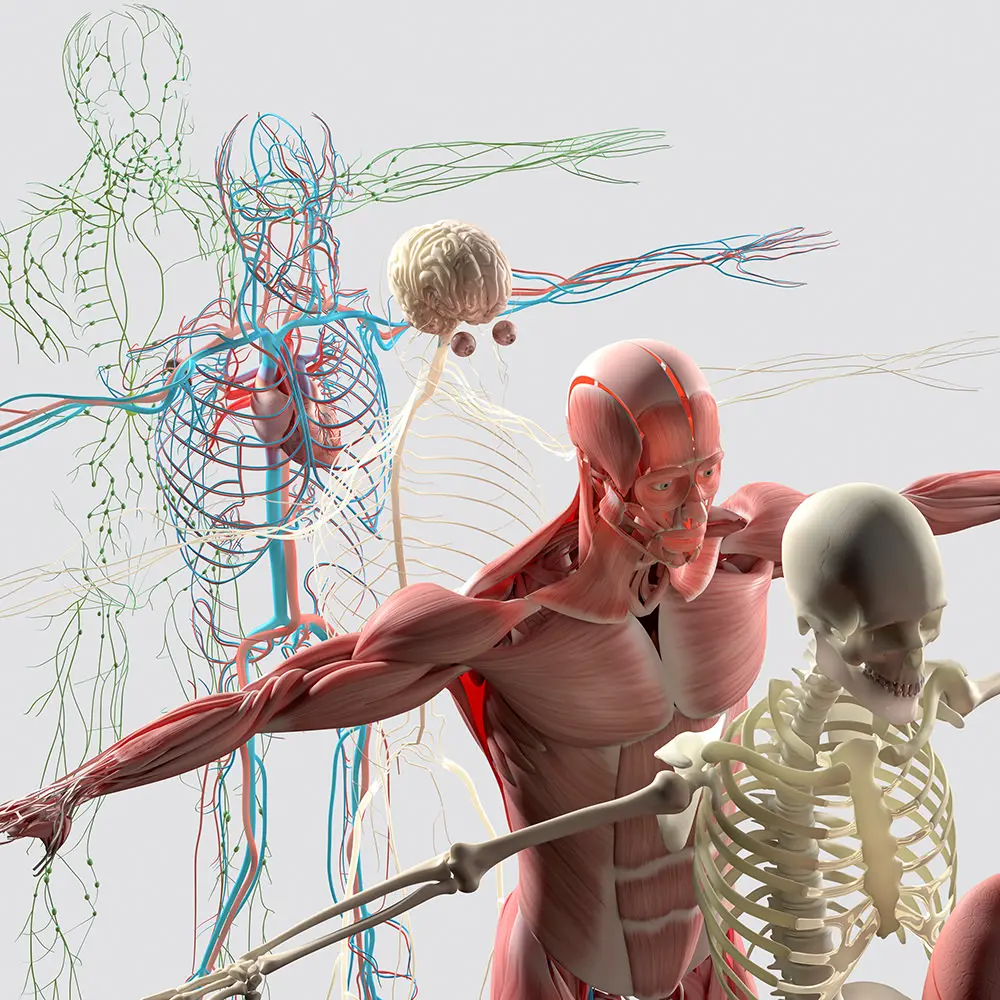Why is the correct positioning of the Atlas so important?
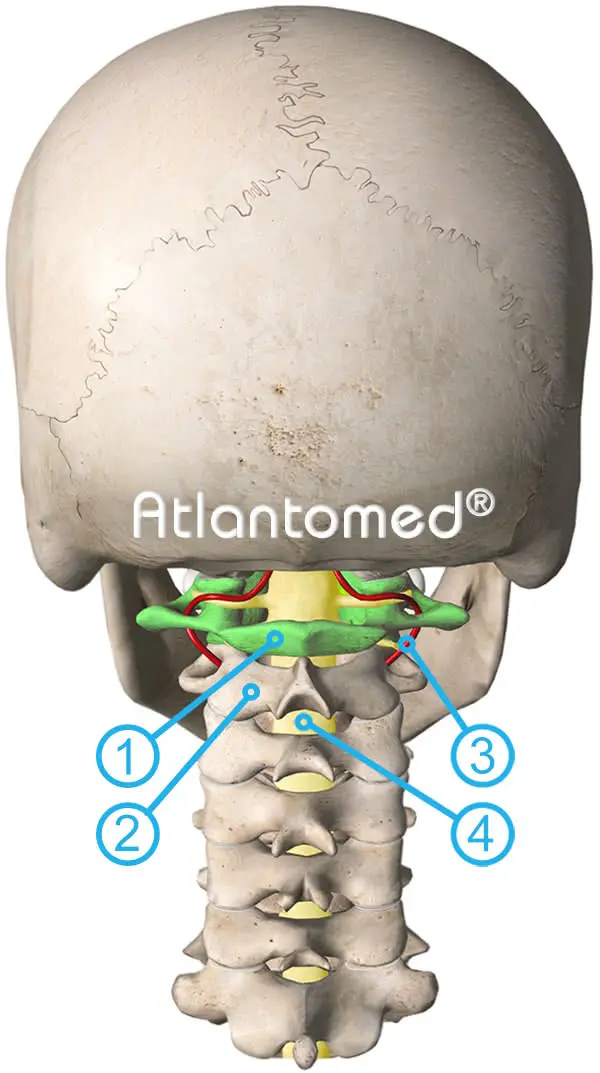
1) Atlas vertebra
2) Axis
3) vertebral artery
4) spinal cord
2) Axis
3) vertebral artery
4) spinal cord
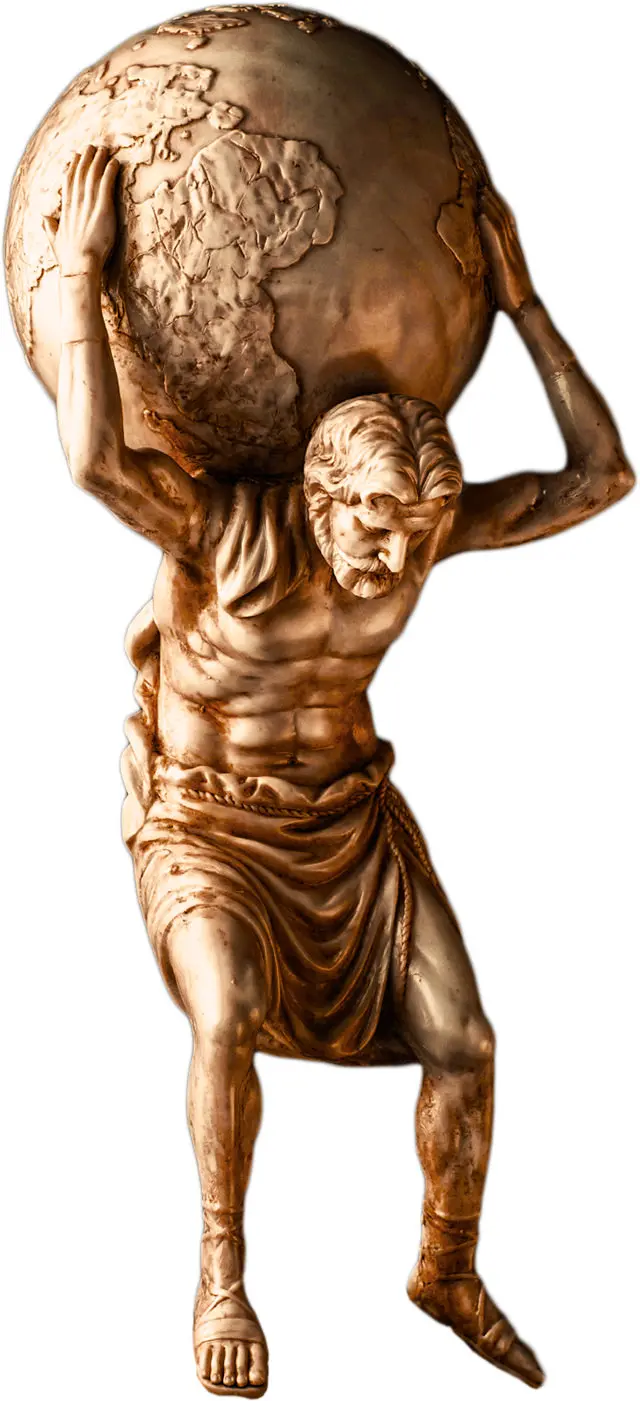
We also find it in Greek mythology: the titan Atlas who was forced as a punishment to carry the weight of the vault of heaven on his shoulders for all eternity. Like the mythological figure, the first cervical vertebra was named Atlas because it supports the weight of the entire head.
When the Atlas is misaligned, interactive communication between the brain and the rest of the body is disrupted, resulting in a neurological deficit.
The anatomy of the cervical spine can be compared to a precision mechanism: the slightest deviation of the Atlas from its anatomically and physiologically correct position can have negative repercussions on the entire musculoskeletal, circulatory and neurovegetative (parasympathetic) systems and on the health of the body in general.
This misalignment may already be present at birth (even if by caesarean section) and may be accentuated after a trauma such as whiplash.
To better understand the problem, it is important to understand the difference between a static and a dynamic condition. When a body moves, the distribution of weight and the forces acting on the musculoskeletal system change dynamically. Muscles under strain can cause transient compression of nerves and blood vessels. These stresses are tolerated without consequences, because they are dynamically variable and only temporary. The body returns to a state of rest after exertion and the compressions consequently cease.
Static load, on the other hand, is always on the skeleton! If this load is permanently unbalanced and one-sided, the ideal posture is compromised. The consequence is constant compression of nerves and blood vessels, leading to a whole series of dysfunctions.
When the Atlas is misaligned, interactive communication between the brain and the rest of the body is disrupted, resulting in a neurological deficit.
The anatomy of the cervical spine can be compared to a precision mechanism: the slightest deviation of the Atlas from its anatomically and physiologically correct position can have negative repercussions on the entire musculoskeletal, circulatory and neurovegetative (parasympathetic) systems and on the health of the body in general.
This misalignment may already be present at birth (even if by caesarean section) and may be accentuated after a trauma such as whiplash.
To better understand the problem, it is important to understand the difference between a static and a dynamic condition. When a body moves, the distribution of weight and the forces acting on the musculoskeletal system change dynamically. Muscles under strain can cause transient compression of nerves and blood vessels. These stresses are tolerated without consequences, because they are dynamically variable and only temporary. The body returns to a state of rest after exertion and the compressions consequently cease.
Static load, on the other hand, is always on the skeleton! If this load is permanently unbalanced and one-sided, the ideal posture is compromised. The consequence is constant compression of nerves and blood vessels, leading to a whole series of dysfunctions.
With the Atlas misaligned you look like the Leaning Tower of Pisa
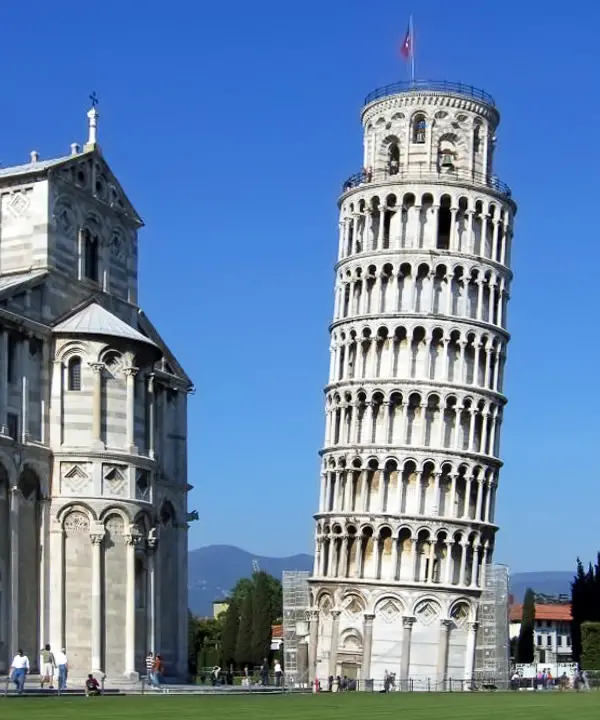
You are probably familiar with the leaning tower in Pisa, Italy: you may have noticed that the last top part was added when the tower was already leaning. Although from an architectural point of view this may be acceptable, if we refer to the structure of the human body, it is an absolutely intolerable solution.
This is exactly what happens to the statics of the body when the Atlas is misaligned. The automatic attempt to keep the head level undermines the correct posture and the entire statics suffers, with all the consequences that this imbalance entails.
This is why Atlas correction is so important for staying healthy and pain-free. Before there was Atlantomed it was always difficult, if not impossible, to solve chronic dysfunction of the upper cervical spine definitively.
This is exactly what happens to the statics of the body when the Atlas is misaligned. The automatic attempt to keep the head level undermines the correct posture and the entire statics suffers, with all the consequences that this imbalance entails.
This is why Atlas correction is so important for staying healthy and pain-free. Before there was Atlantomed it was always difficult, if not impossible, to solve chronic dysfunction of the upper cervical spine definitively.
The small bone with big effects
Although to the layman the Atlas may appear to be a small and insignificant vertebra and could argue that "we have many others, all equally important", in reality the first Atlas vertebra is comparable to the keystone in an architectural arch: without it everything collapses.
Without it, everything collapses. The Atlas is in fact the connecting link between the skull and the spinal column, and its alignment determines the correct position of the head on the spinal column.
The misalignment of the first vertebra directly or indirectly causes negative repercussions on all the systems of the body: on the skeletal system, on the entire muscular system, on the nervous system, on the cardio-circulatory system and lastly on the lymphatic system.
Without it, everything collapses. The Atlas is in fact the connecting link between the skull and the spinal column, and its alignment determines the correct position of the head on the spinal column.
The misalignment of the first vertebra directly or indirectly causes negative repercussions on all the systems of the body: on the skeletal system, on the entire muscular system, on the nervous system, on the cardio-circulatory system and lastly on the lymphatic system.
The consequences of the misaligned Atlas
When the skull rests on an unlevel Atlas, the balance organ, together with the cervical proprioceptors and the eyes, are nevertheless inclined to maintain alignment with the horizon. As a result, the ligaments and muscles of the sub-occipital area are constantly under tension, in an effort to compensate for the alignment of the head. The rest of the spine curves accordingly.
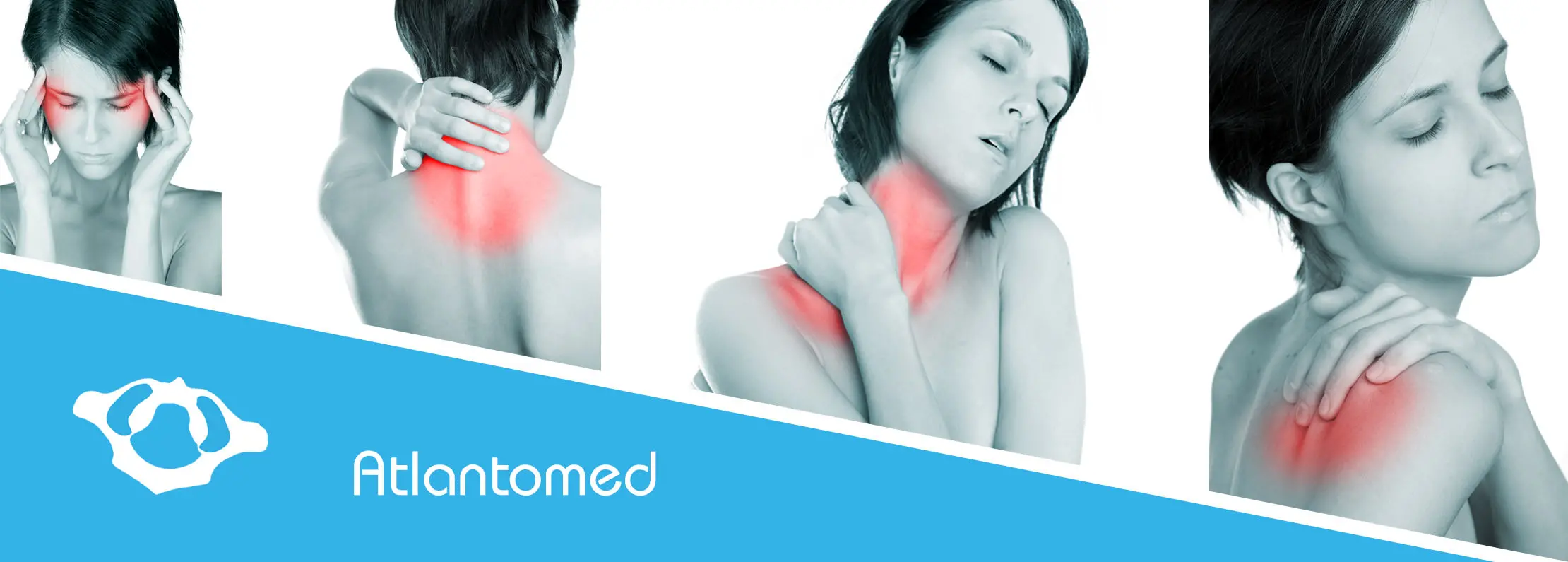 This constant strain can lead to chronic muscle tension and pain, especially if the muscles are poorly trained. The result is neck problems, tension headache, dizziness, stiff neck and painful and restricted rotation or flexion of the head.
This constant strain can lead to chronic muscle tension and pain, especially if the muscles are poorly trained. The result is neck problems, tension headache, dizziness, stiff neck and painful and restricted rotation or flexion of the head.In this condition, the doctor's advice to train and strengthen the neck muscles can be helpful, but it would be even better to solve the problem at its root, by eliminating the cause of the imbalance.
Effects on the Axis and other cervical vertebrae
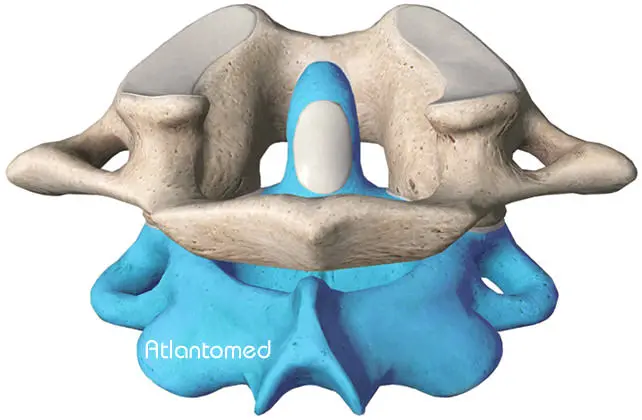
Depending on the type of misalignment of the Atlas, the alignment of the Axis (second cervical vertebra or C2) may also be adversely affected.
During the alignment of the Atlas, the Axis is also realigned if necessary. The other vertebrae below then adapt accordingly. Regularly blocked vertebrae, which required repeated intervention by a chiropractor or osteopath, usually no longer needed to be treated after the Atlantomed treatment.
During the alignment of the Atlas, the Axis is also realigned if necessary. The other vertebrae below then adapt accordingly. Regularly blocked vertebrae, which required repeated intervention by a chiropractor or osteopath, usually no longer needed to be treated after the Atlantomed treatment.
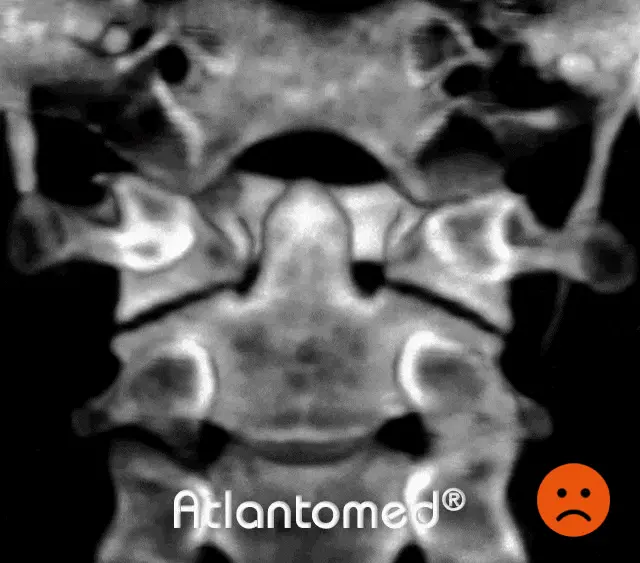
PRIMA
DOPO ATLANTOMED
This 3D reconstruction of a spiral CT scan shows a section of the upper cervical vertebrae seen from behind, before and after correction of the Atlas with Atlantomed vibroresonance.
After treatment, the improved alignment of the first Atlas vertebra in relation to the occiput is clearly visible, as is the second vertebra.
The tooth of the epistrophe is more centred in its articulation with the Atlas, while the skull is no longer unbalanced to the right.
After treatment, the improved alignment of the first Atlas vertebra in relation to the occiput is clearly visible, as is the second vertebra.
The tooth of the epistrophe is more centred in its articulation with the Atlas, while the skull is no longer unbalanced to the right.
What effects does the misaligned Atlas have on posture?
When the vertebrae, which together make up the spine, are in balance, the weight is distributed evenly on both sides of the skeleton.
The head rests on the Atlas with a not inconsiderable weight of 5-6 kg. A misaligned Atlas discharges this weight in a way that is not perpendicular to the spine.
This condition creates a shift in the body's centre of gravity and consequently an imbalance from head to toe, which leads to the formation of joint blocks and musculoskeletal dysfunctions.
One side of the body is loaded more than the other. This is why pains are generally concentrated on one side.
This imbalance can be measured using two common scales, which can indicate a difference in load of up to 20 kg between one leg and the other. Depending on the type of misalignment, the physiological kyphosis or lordosis of the spine may also be accentuated or disappear.
The head rests on the Atlas with a not inconsiderable weight of 5-6 kg. A misaligned Atlas discharges this weight in a way that is not perpendicular to the spine.
This condition creates a shift in the body's centre of gravity and consequently an imbalance from head to toe, which leads to the formation of joint blocks and musculoskeletal dysfunctions.
One side of the body is loaded more than the other. This is why pains are generally concentrated on one side.
This imbalance can be measured using two common scales, which can indicate a difference in load of up to 20 kg between one leg and the other. Depending on the type of misalignment, the physiological kyphosis or lordosis of the spine may also be accentuated or disappear.

The position of the Atlas influences the whole body.
Misalignment of the Atlas can trigger a chain reaction, causing an asymmetry of the entire skeleton, such as: one shoulder being higher than the other with pain in the scapula, scoliosis, tilted pelvis with consequent risk of herniated discs (discopathy), back, hip, knee and possibly foot pain.
When correct posture is compromised, permanent muscular contractures develop which, in addition to pain, can cause blockages (subluxations) of other vertebrae. This leads to compression of the nerve roots outside the spinal column, which become irritated over time. In order to treat the irritation, doctors increasingly use corticosteroids, which are certainly very useful drugs, but which produce important side effects in the long run.
Compression of specific nerve endings can cause tingling, a feeling of 'sleepy' limbs or a malfunction of the corresponding innervated organs, giving rise to a whole range of disorders, even in areas of the body that are apparently unrelated.
Thickened and hardened muscles, due to the constant strain they are subjected to, also compress the lymphatic channels and veins passing through the muscles, causing reduced vascularisation with the accumulation of metabolic waste products in the tissues. This condition triggers a vicious circle that makes the muscles increasingly rigid.
There are undoubtedly other factors that can alter correct posture, such as cranio-mandibular dysfunction and scars, but the position of the Atlas is absolutely crucial. Many thousands of postural photos taken in practice, before and after treatment, show how the skeleton can regain a more correct and natural shape, without any further intervention other than correction of the Atlas.
If you permanently have one shoulder higher than the other or a misaligned pelvis, discomfort and pain are inevitable sooner or later!
When correct posture is compromised, permanent muscular contractures develop which, in addition to pain, can cause blockages (subluxations) of other vertebrae. This leads to compression of the nerve roots outside the spinal column, which become irritated over time. In order to treat the irritation, doctors increasingly use corticosteroids, which are certainly very useful drugs, but which produce important side effects in the long run.
Compression of specific nerve endings can cause tingling, a feeling of 'sleepy' limbs or a malfunction of the corresponding innervated organs, giving rise to a whole range of disorders, even in areas of the body that are apparently unrelated.
Thickened and hardened muscles, due to the constant strain they are subjected to, also compress the lymphatic channels and veins passing through the muscles, causing reduced vascularisation with the accumulation of metabolic waste products in the tissues. This condition triggers a vicious circle that makes the muscles increasingly rigid.
There are undoubtedly other factors that can alter correct posture, such as cranio-mandibular dysfunction and scars, but the position of the Atlas is absolutely crucial. Many thousands of postural photos taken in practice, before and after treatment, show how the skeleton can regain a more correct and natural shape, without any further intervention other than correction of the Atlas.
If you permanently have one shoulder higher than the other or a misaligned pelvis, discomfort and pain are inevitable sooner or later!
Change of posture after Atlas correction
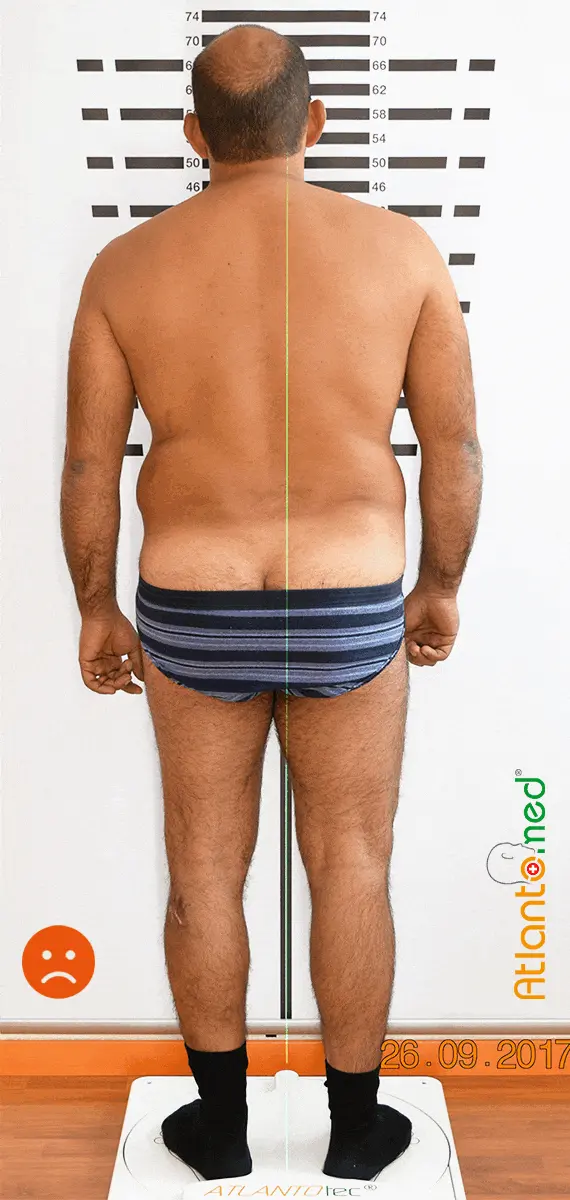
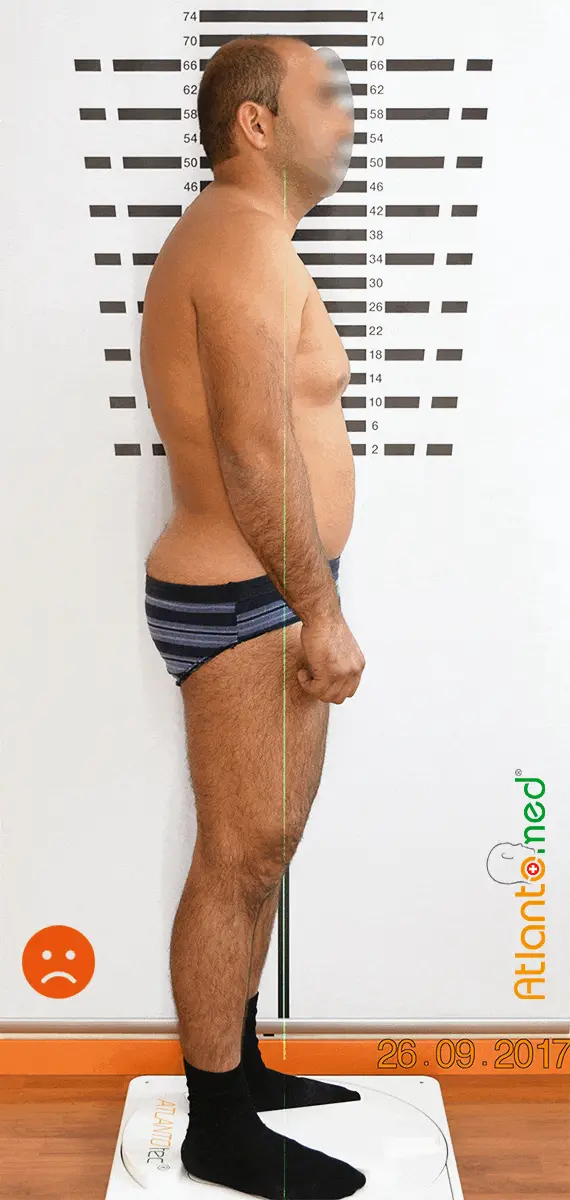
PRIMA
DOPO ATLANTOMED
Are your complaints really only psychosomatic?

How many patients have been told by their doctor that the cause of their symptoms is unknown or has a psychosomatic origin? The doctor in question is most likely unaware of the negative consequences of a misaligned Atlas.
Chronic disorders resulting from whiplash, such as migraine or recurring headaches, can find a simple and logical explanation in the dysfunction of the first cervical vertebra. Correction of this vertebra is a very concrete solution, often completely resolving the problem, which allows freedom from the continuous use of medication and its side effects.
After Atlantomed treatment, a significant improvement in posture is often observed, with a beneficial effect on problems such as: functional shorter legs, tilted pelvis, hyperlordosis, kyphosis, functional scoliosis, loss of physiological cervical lordosis.
Chronic disorders resulting from whiplash, such as migraine or recurring headaches, can find a simple and logical explanation in the dysfunction of the first cervical vertebra. Correction of this vertebra is a very concrete solution, often completely resolving the problem, which allows freedom from the continuous use of medication and its side effects.
After Atlantomed treatment, a significant improvement in posture is often observed, with a beneficial effect on problems such as: functional shorter legs, tilted pelvis, hyperlordosis, kyphosis, functional scoliosis, loss of physiological cervical lordosis.
What people say about us
The only ones with over 9000 testimonials and reviews in several languages! Click to access the related platforms and read many opinions, feedbacks, experiences and testimonials after the Atlantomed vibro-resonance Atlas correction. Be wary of imitations.
Written by: Alfredo Lerro


